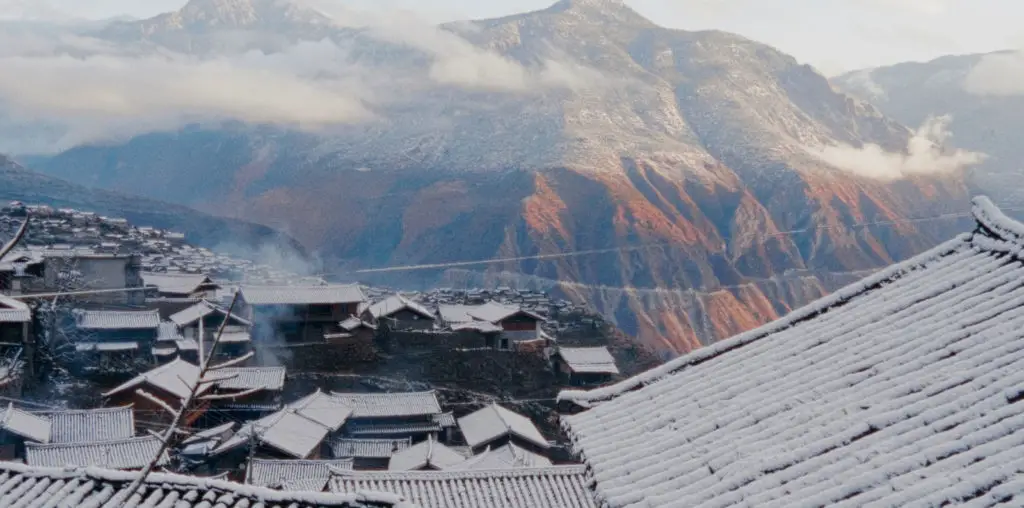
In her documentary, Earth Protectors, environmental artist Anne de Carbuccia travels the world to the most desperate climate-challenged locations to bring awareness of a global crisis through her art and activism.
Anne de Carbuccia first became an environmental artist through her father, the publisher of famed ocean explorer Jacques Cousteau. Her interactions with Cousteau inspired her to visit the most troubled locations in the world and create art installations at each spot called Time Shrines, involving an hourglass and a skull representing life. Her goal is to document how our planet changes by showing what we have, what we’re about to lose, and what we’ve already lost.
Her travels take us to Nepal’s Lo-Manthang (Upper Mustang), an isolated village on the brink of extinction, as the glaciers that brought the village water quickly disappear. As sustaining a harvest in the village becomes more complex, the villagers must make a tough choice to adapt or move on. Moving on means the loss of a culture that has existed there for hundreds of years.
Pucallpa is a forest village along the Amazon in Peru. It boasts some of the oldest trees, but the forest is shrinking due to corrupt cocoa farmers and drug traffickers, who come in and strip valuable forest land to grow their illegal crops. Unarmed, the locals are helpless to stop them.
We then head to Siberia, which has the largest freshwater lakes in the world. This lake, though, is drying up as surrounding populations grow and they fight over access to its precious natural resources.

“…visit the most troubled locations in the world and create art installations at each spot called Time Shrines…”
The problems continue to spread. In North Africa, the climate has created a growing population of refugees fleeing their homes affected by rising temperatures. In the Maldives, plastic and other pollution are harming sea life. As the film progresses, we experience drought, rising sea levels, and rising temperatures.
Over the last seven years since the relaunch of Film Threat, we’ve watched more than our fair share of environmental documentaries. I’ve certainly noticed the intensity of that message over time. The message is always the same: we must change course now before we hit the tipping point when the Earth’s decline accelerates.
There is a lot of information packed into Earth Protectors. Much of it comes from environmental expert Dr. Julie Pullen. She serves as the thread that explains the seemingly disperate climate occurrences worldwide. The problems and answers are varied from the geological to the political.
As the title explains, director De Carbuccia immerses herself in each location and teams up with one of its “Earth Protectors.” For example, in Peru, her guide is Shipibo, a park ranger who walks her through a large section of deforestation. Shipibo had dedicated his life to protecting the forest, but who would come after him? Each protector helps De Carbuccia find environmental artifacts to help build her Time Shrine, displayed on the One Planet One Future website.
The third act of Earth Protectors is when the environmental message kicks into fifth gear as De Carbuccia highlights the rising levels of environmental anxiety swelling amongst our youth. Here, the educational aspect of curtailing climate change comes into effect.
As I mentioned before, we review a lot of environmental documentaries. They range from hopeful to cataclysmic. Earth Protectors leans toward the cataclysmic end of the spectrum but holds out that there is still hope to save us all. The information is presented in a thoughtful and very emotional way. As De Carbuccia states, “We are a geological force!” But will our force be a positive or negative one?
For more information about Earth Protectors, visit the One Planet One Future website.

"…leans toward the cataclysmic end of the spectrum but holds out that there is still hope..."


